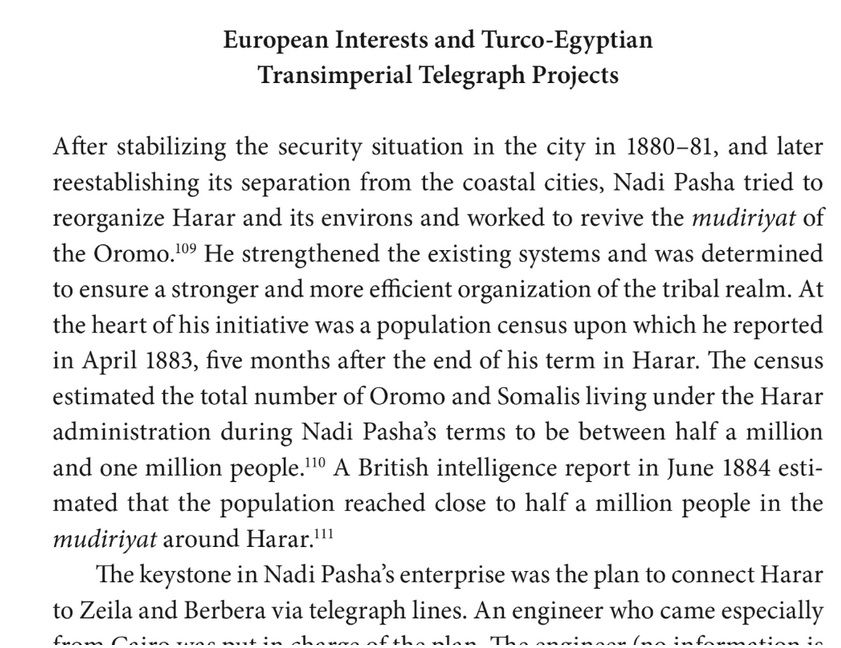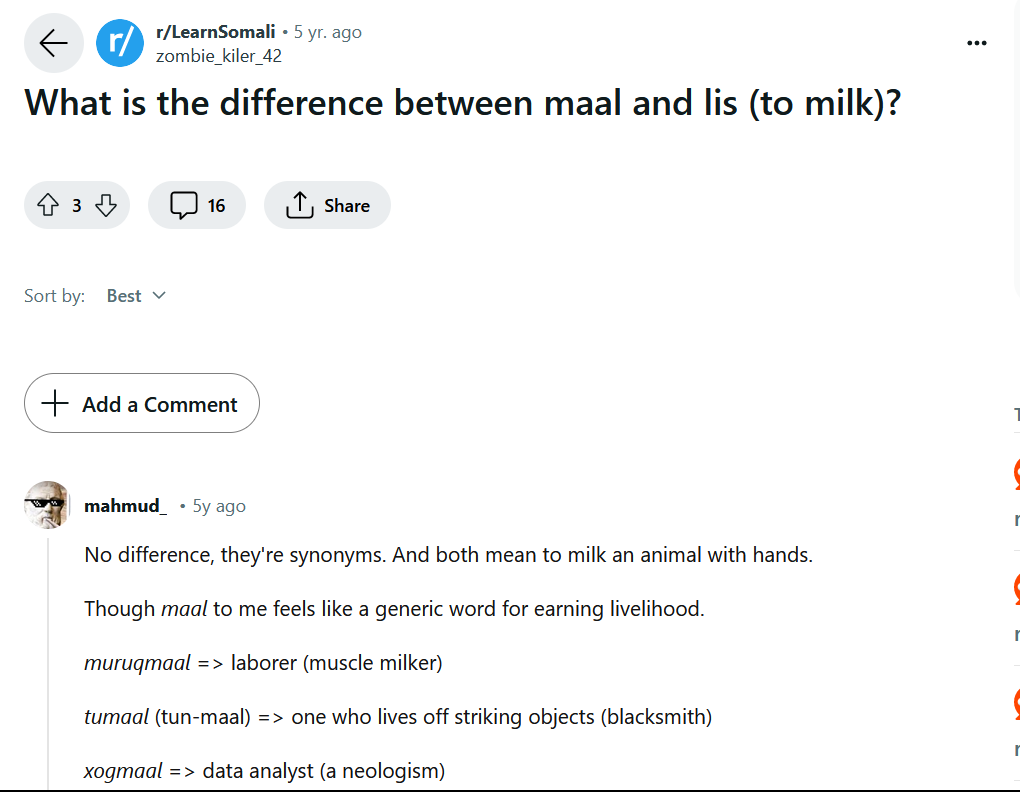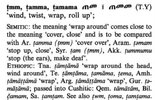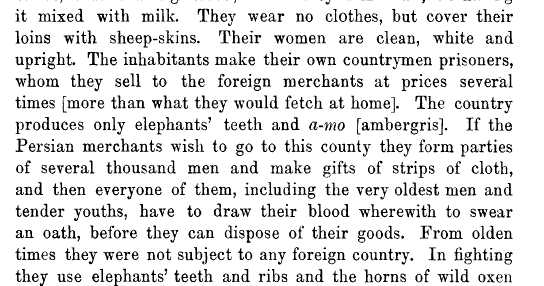Idilinaa
VIP
Hararis call Somalis “Tumur” FYI.
not really, Somalis probably came up with the word Soomal to refer to their way of life. Because Hararis have been calling all Somalis “Tumur”. Tumur wasn’t an occupational class the same way we called Oromos “Argata”. That also wasn’t an occupational class. Soomal was the way your people chose to name themselves because that is what they valued.
No it’s because before the Oromo migrations we used to be in multiple cities. We literally have Harari manuscripts that talked about these events. Harari bookbinding was a specialty with even Richard Burton rivaling it with only Persia. The Harari manuscripts talked about the huge population upheaval and famine the Oromo migrations caused, and how at the end only harar survived. After being trapped in a city for centuries, that city becomes your identity.
Tumur is a pronounciation of Tumaal(Blacksmith). They also call Somali ''Bona'' for Boon(leatherworker) and they also pronounced Somal as' Semur . All 3 of those names was used by Hararis.
They are basically just reiterating names we use for eachother. Soomaal etymologically is similar to Tumaal. I shared a source by Ali Riraash that breaks it down: https://www.somalispot.com/threads/futuh-al-habasha-somalis-as-bedouins.163690/page-10#post-3982043
More than half of the permenant population of Harar was Somali by the time of Burtons visit , as they lived in Harar they was part of the clergy producing manuscripts as well. But a lot of the manuscripts were copied from elsewhere, some even from the Northern coast or Yemen and was perserved in Harar.
The quarters Somalis lived in was the oldest parts of the city and their entrepoint features the oldest gate of the city the Erer Gate which drove much of the commerce and traffic to the town.
They even borrowed the word Xeer as heera meaning custom/law in Somali as well, noticed it from the list. So Garaad is even less suprising.
Boon is less so about low caste as incorrectly interpreted. They are umbrella occupational names, simply.
Also it's not surprising that tumur/tumtu (Blacksmith/tumaal) and boon (tanner) are loans when you consider the fact that most black smiths/craftsments and weavers/leatherworkers in Harar were Somali. They call them Tumur collectively as a result of that.

Inside the city the artisans are concentrated in certain quarters:


They didn't originate in the areas they settled into , they even say it themselves when people interviewed them that they were Amharic speaking settlers that came down to the colonize the area in the 19th century but they still bore those names as exclusive identities.After talking to many Habashi, instead of identifying with a "clan" they instead go by whatever village, town they originate from.
That's why alot of modern people calling themselves "Harari" are Amhara and Galla who settled the city after Meneliks conquest.
And the previous bunch calling themselves harari were Agrobba, who are linked to Amhara, and were refugees who settled in the city after the futuh.
I can understand naming yourself after the village, town or a region , doesn't maked them originally from there.
There is no mention of Harari or Agrogoba people in any historical medieval writing thats the problem, there are mentions of Gurage and other identities/names , even in Futuh.
It makes sense though they only called themselves by those names when they settled into those areas in later years and centuries, which they somewhat admit to. Even Gurage identity was a re-use by a section of them who said they came down from Tigray when interviewed.
People see them baring those names and think it means its part of a historical continuity.
Now the Ethiopianists try their hardest to discredit Somalis by creating this absurd link between Habasha groups who settled jn harar and the name 'Harla" in the Futuh who are not even an ethnicity or have a known language of their own. If you said calling someone a Harla during the Futuh was like calling someone a Tumaal that would be just as plausible a hypothesis.
There is literally 0 proof for what these ethiopians push. Meanwhile Somalis are named the most and Somalis are also named by their distinct clans. Showing the familiarity the Yemeni scribe had with Somali society.
Harla in Christian ethiopian sources, genealogical records(which points to them being kombe darood who settled tin the area to specifically farm) and Medieval muslim chronicles like futuh are just described as a regular agro-pastoral clan that lived between the fertile upper shabelle and awash.
They ignore the documented written mentions of them and create a mythology around them by misrepresenting and relying on oral history.
They go to Somalis and ask them ''who was there before you?'' and they think back to their non-Muslim ancestors before the founding the medieval Muslim clans i.e ''Dadki Hore'' and give Taalo Tiriyaad story of giants of a cursed people.
In one of the revealing instances I'M Lewis went to investigate some of those burial mounds and found just recent Somali remains in them:

Then they go to Oromo or Afar who pushed into the fertile areas where Harla was the dominant clan and they start attributing ruins and buildings to them
Both tales morphed into one and it's repeated by current writers.
If you read Futuh you can see it's the state/government leaders and perhaps wealthy people that intitiated and financed the building of towns, mosques and settlements it wasn't Harla. They are not directly mentioned to build anything.
Here is a few passages from Futuh: Even appointing people to carry out the building process.
With Abu Bakr were forty knights from Balaw, with the sum Sakr and the sum Muhammad. He pacified it and its people remained on as peasant farmers for them. He built towns in it, and mosques.
Over it, the imam appointed Garad Sabr ad-Din,and built towns and mosques in it that are there today.' He also appointed Farasaham 4 All along with Farasaham Sultan, 'Adil, Samsu
and Takla over the land of Darha87' which extends from Bagemder to Gojjam. He
built towns and mosques there, and its people remained on as peasant fanners for
the Muslims.
There are villages intervening the cities/towns:
The imam went ceaselessly from village to village until he arrived at the country of Hubat. There he was joined by the emir Husain al-Gaturi as a support.
This is pretty much supported by archeology that this was state coordinated.
As far as Tumaal l(Blacksmiths) goes, they are not a clan, or a large involved population like Soomaal(bedouins) who lived all over and most of them would be concentrated inside the towns and cities to even be given a mention in a chronicle about a conquest like Futuh.
Last edited:








